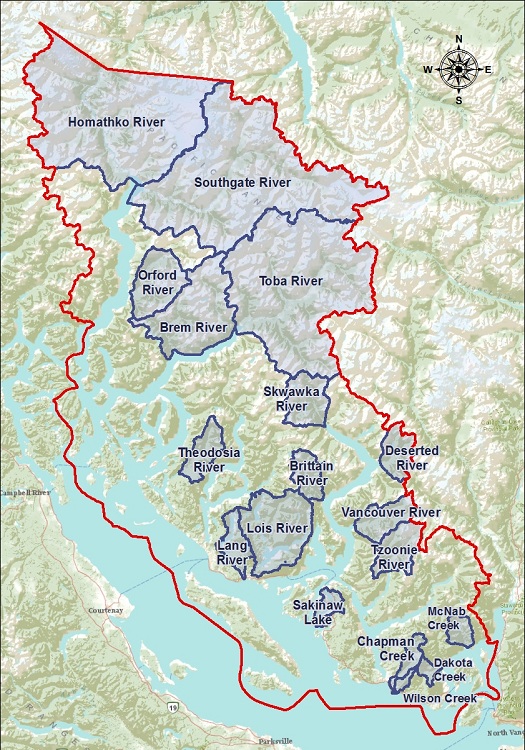
Fisheries Sensitive Watersheds
Historically the major rivers on the Sunshine Coast produced a landed salmon catch measuring in the 100s of millions of kilograms annually, until the fishery began to decline sharply in the 1970s.
As well, this region's rivers supported First Nation populations, very similar in size to the Sunshine Coast's current population, for at least 10,000 years. The salmon fishery, along with forestry, provided the foundation of wealth that built our contemporary society.
The fisheries declined for several reasons: overfishing, hydroelectric dams and logging.
Both the extent of logging and specific logging practices are responsible for massive environmental damage. Today, we urgently need to improve forestry practices and restore our fisheries.
Fisheries Sensitive Watershed Designation
The Fisheries Sensitive Watershed designation was created by the British Columbia government through the Forest and Range Practices Act in 2005. Its purpose is to ensure that forestry activities do not compromise fisheries values in major fish-bearing watersheds.
Unfortunately, government has not designated any FSWs in the greater Sunshine Coast region. So, the SCCA decided to make the nominations ourselves.
Through our Habitat Area Nomination Project we proposed seventeen formal nominations of specific areas for Fisheries Sensitive Watershed (FSW) designation.
The first step in the nomination process was to document the historical productivity in each of these potential FSRs. The following links will show you a map, a photo, a brief written historical summary and more than 50 years of salmon return data in our most significant watersheds.
We have taken the view that peak historical escapements illustrate the ecological potential of a restored system. The story emerging from the data is that the salmon fisheries have been radically degraded by poorly regulated land uses, primarily logging, but is recoverable. We strongly believe that this is possible and that the benefits of recovery to society and the environment would be enormous.
With our nomination project, we are moving decisively toward recognition of the work that needs to be done in order to restore the region's salmon rivers.
The FSW designation mandates consideration of the cumulative hydrological impacts of forestry and it results in changes to the pace of logging so that logging does not destabilize fish bearing streams.
The designation itself will not restore the fisheries, but it's a necessary step along the path of ecologically responsible management and incremental recovery of populations.
Fisheries Resources on the SCCA Website
Where did all these fish come from?
As part of the Habitat Area Nomination Project (HANP), we have been collecting historical information about fish spawning escapements in each of the region's major rivers. This information gives us a rough idea of both the ecological potential of a watershed for producing salmon, and the benefits that society received in the past and might anticipate in the future.
The interactive map below allows you to see historical records of the size and diversity of salmon returns in each of the region's major rivers.
To see the data for a particular watershed on the map:
- If you are on a desktop or laptop, you can click that watershed on the map.
- If you are on a tablet or phone, please use links in the In this Section box to access the same data.


